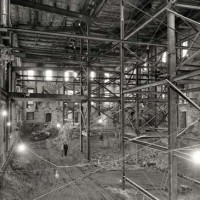Julia Alvarez (born New York, New York, 1950) writes poetry, fiction, and essays. Her book Before We Were Free received the 2004 Pura Belpré Medal, and Alvarez earned another Pura Belpré Medal in 2010 for Return to Sender. Children can visit her website at: Julia Alvarez.
Nathaniel Currier (born Roxbury, Massachusetts, 1813; died New York, New York, November 20, 1888) was a lithographer. He was part of the famous Currier and Ives partnership. Their lithographs answered a need for reasonably priced art. Now the originals are very expensive.
Dick King-Smith (born England, 1922; died England, January 4, 2011) wrote at least 135 books for children. His book The Sheep-Pig became the movie Babe. Children could learn more at: Dick King-Smith.
Wilhelm Conrad Roentgen (born Lennap, Prussia, 1845; died Munich, Germany, February 10, 1923) discovered X-rays. He won a 1901 Nobel Prize for his work. Children can learn more at: Wilhelm Conrad Roentgen.
Edward Steichen (born Luxembourg, 1879; died West Redding, Connecticut, March 25, 1973) was a photographer. Children could view a collection of his photographic portraits at: Edward Steichen.

